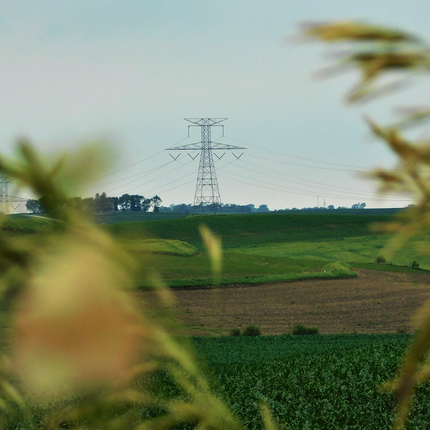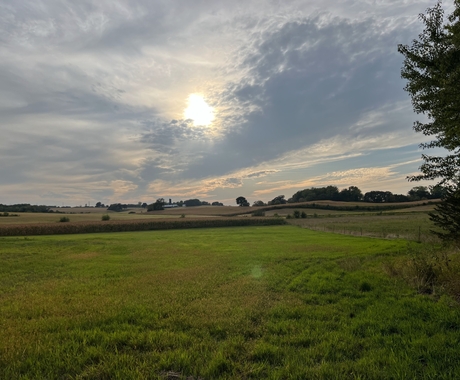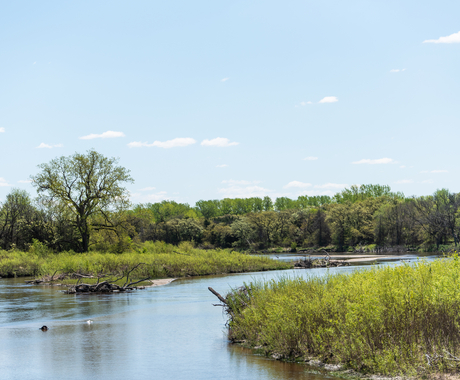Teresa Hoffman, policy communications associate, teresah@cfra.org, 402.687.2100 ext. 1012; or Rhea Landholm, brand marketing and communications manager, rheal@cfra.org, 402.687.2100 ext. 1025
NEVADA, IOWA – More than 600,000 miles of electric transmission lines across the U.S. could provide an opportunity for investments in wildlife and pollinator habitat, according to a new report from the Center for Rural Affairs.
“Amplifying Clean Energy With Conservation: Part Two: Leveraging Electric Transmission Lines for Stewardship” explores how utilities, policymakers, and landowners can couple rights-of-way for energy infrastructure with investments in pollinator and wildlife habitat to benefit ratepayers across the Midwest.
“Estimates say up to 220 gigawatts of new electricity is needed by 2030 to meet growing energy demand in this country and all indicators point to renewable energy being the most economic source to accomplish that,” said Cody Smith, policy associate at the Center and author of the report. “Electric transmission lines play a crucial role in any plans to expand renewable energy; fortunately, they can also double as habitat for vulnerable wildlife and pollinators, like monarch butterflies.”
The report, part two in a three-part-series highlighting the role of conservation and stewardship in clean energy expansion, emphasizes planning, implementation, and management considerations for establishing native vegetation underneath high voltage electric transmission lines.
“As the clean energy economy continues to expand, electric transmission lines will inevitably expand, offering up hundreds of thousands of miles for investments in natural resources conservation,” Smith said. “The implementation of native vegetation in these corridors could also be leveraged for rural development efforts, including diversifying farm income.”
As evidenced in the report, many electric transmission lines run through private farmland in the Midwest. Changes in the 2018 farm bill have allowed farmers and landowners to enroll land within these easements into farm conservation programs, like the Conservation Reserve Program. This could result in additional payments to farmers while protecting vulnerable species of wildlife and pollinators.
Click here to read the full report.
# # #





